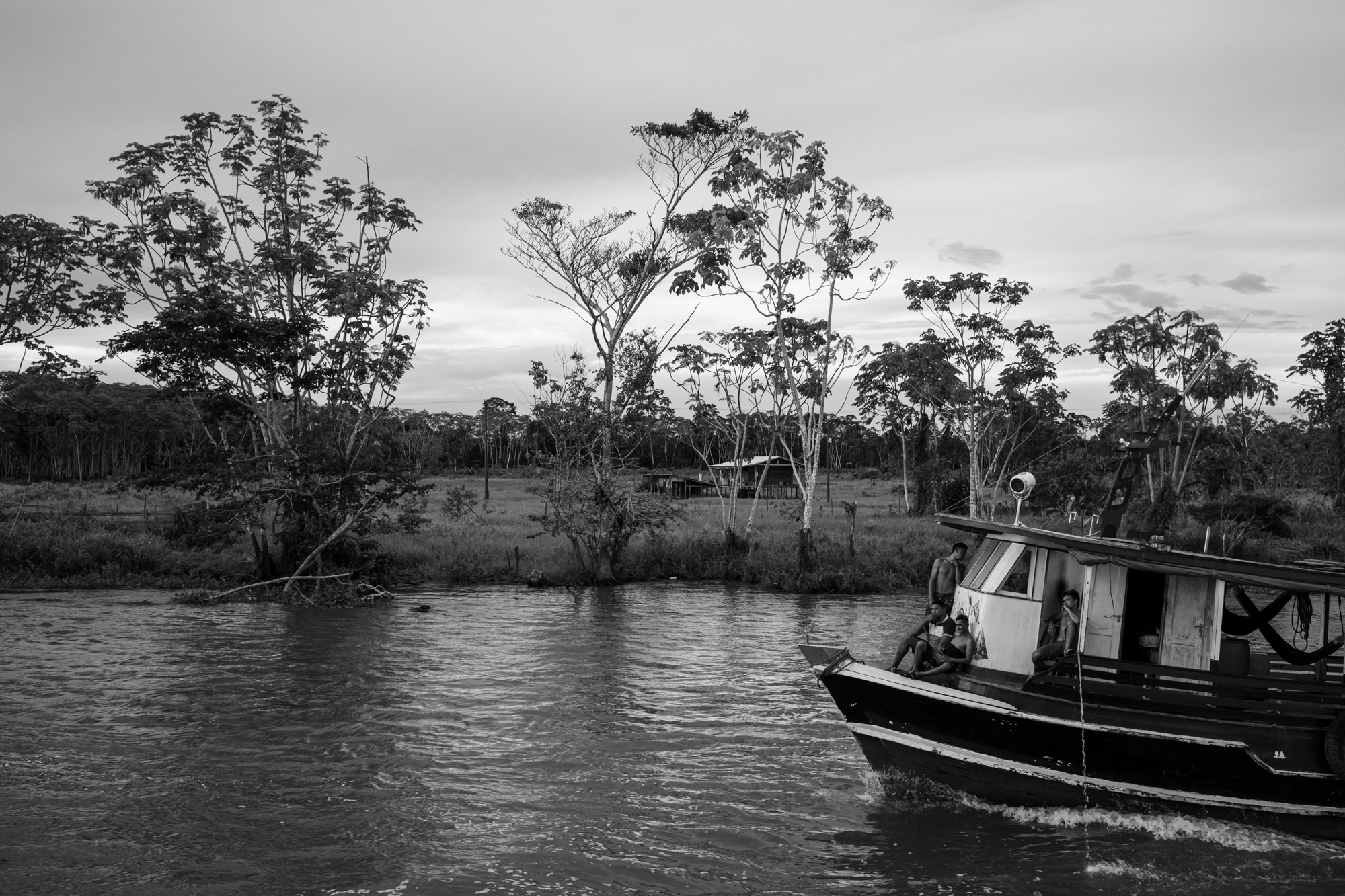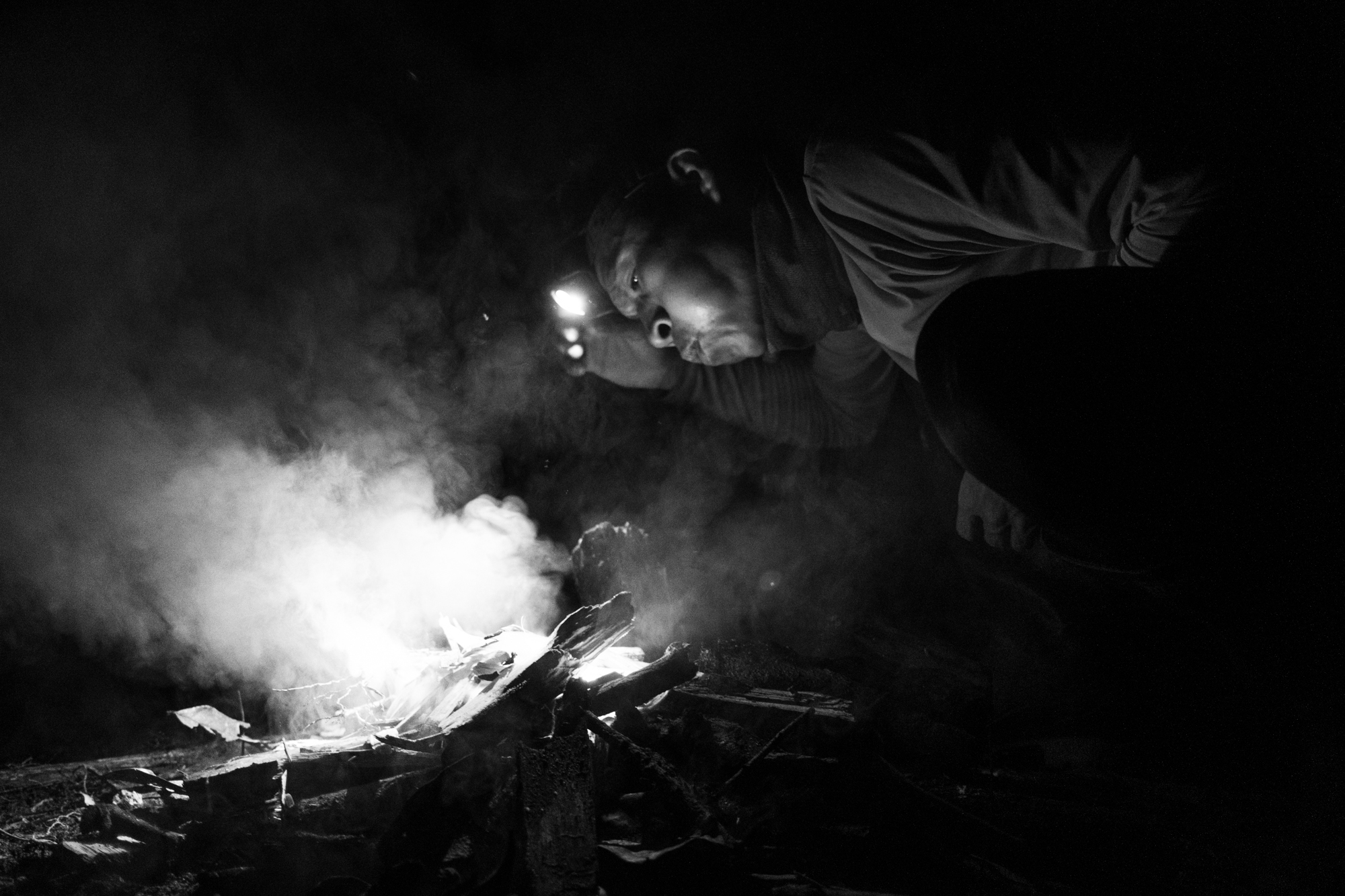Along the banks of the Amazon
Brazil & Colombia, 2023
Amazonas… After crossing the Atlantic Ocean aboard a 10-meter sailboat and an extended stopover in French Guiana, the next leg of my journey takes the world’s largest river as its common thread.
From Macapá, a Brazilian town in the state of Amapá close to the river’s mouth, I’m embarking on almost 3,000 kilometers of inland navigation all the way to the triple border between Brazil, Peru and Colombia. A slow voyage across the Brazilian Amazon rainforest begins aboard small ferries carrying all kinds of goods to the many towns and villages along the river. The same boats that locals use to travel up and down the river, always in tropical heat, lulled by the gentle rocking of their multicolored hammocks.
This makes me think back to another mythical journey: the Trans-Siberian Railway across Russia. Another means of transport, another climate zone, another cultural area, no doubt. And yet, we’re talking about two relatively slow means of transport when considering the immensity of the distances to cover. These two journeys also take place in two of the world’s most extensive forests: Russia is home to a large portion of the boreal forest, the Taiga, while most of the Amazon rainforest lies in Brazil. Both are used mainly by locals from modest backgrounds who have to travel from one city to another due to life circumstances, where air travel would be too expensive. Both microcosms are overcrowded: the Trans-Siberian railway carriages and their fifty berths give way to the hundreds of hammocks meticulously hung, almost intermingled, on the decks of the Amazon boats. In both cases, the traveler is given an excellent vantage point for sociological observation. Hours and days go by, and tongues are gradually loosened. What better way to kill time than to chat about anything and everything with your hammock neighbor?
We’re sailing against the current up the Amazon river from its mouth on the Atlantic coast towards its source in the Andes. Our boat is making slow progress, reaching 15 km/h at most. In this direction, it’s best to keep as close to the shore as possible, so as to be less affected by the current. Conversely, boats heading down the river towards the ocean place themselves right in the middle to benefit from the current and save fuel. I never tire of observing the majestic rainforest along the banks of the river. This landscape might seem monotonous after some time. If you look closely, however, you will catch a glimpse of the intense and ever-changing biodiversity of the equatorial ecosystem. Because of my urban upbringing, and what’s more in a different climate zone, I’m unable to name even one hundredth of the myriad species of trees and plants that thrive here. On the other hand, there’s something beautiful and restful about not indulging in any sort of classification and simply letting this gentle natural spectacle bewitch you along the way.
From a cultural point of view, the stilt houses and their inhabitants sometimes venturing out on the water in frail wooden boats offer an equally captivating spectacle. I can’t think of anything more fascinating than the tenacious and humble adaptation of the human species to all our planet’s climates and environments. From the dunes of the Sahara to the Mongolian steppe to the banks of the Amazon, the subtle variations of the great human family remind us that beyond the obvious “cultural” differences, what stands out is a constant and universal eagerness to move around and draw sustenance from the land that saw us grow.








The journey is punctuated by several stops and changes of boat. I get to spend a few days near Santarem, then in the intense anthill of over two million inhabitants known as Manaus, a bizarre urban experiment in the heart of the Amazon region. Finally, we reach Tres Fronteras after fourteen days of river travel… For this last stopover in the Amazon region, I share the daily life of Politt’s family for a few days. Politt lives in the village of Arara and belongs to the Indigenous Tikuna community, one of the most populous ethnic groups in the Amazon, found in Brazil, Peru and right here in Colombia. A great opportunity to experience from within the way of life of the men and women whose existence plays out between the mighty river and the rainforest… The villagers make their living by growing cassava and of course by fishing, among other activities. Politt also takes me to spend a night in the jungle. After enjoying the campfire and an evening stroll to observe the local fauna, we take refuge in our hammocks and mosquito nets and let ourselves be lulled by the symphony of tropical insects in full swing during the night.
Arara is located some 20 kilometers from Leticia, a city of 32,000 inhabitants with an international airport, the capital of the Colombian department of Amazonas and the country’s main port on the banks of the eponymous river. To reach the village of 1,200 souls from Leticia, you can take a small motorboat on the river for three hours. Or, as we did on the outward journey with Politt, you can also get there by land. A road brings you close by bus or cab, but you then have to walk the remaining kilometers through the jungle to reach the village.
In the near future, villagers will no longer have to walk these last few kilometers. The road is currently under construction and should reach the first homes within the next year. A project that seems to polarize the population of Arara. Some inhabitants see logistical advantages for the transport of goods and people. For others, such as Politt, the growing interactions with the urban center risk undermining the preservation of Tikuna culture, language and traditions. Without denying the comfort that the road could bring to the inhabitants, I can’t help thinking of Tibet, a land on the other side of the world that provides a striking example of the devastation to which transportation routes can contribute. The Beijing – Lhasa railway, completed in 2006, has only accelerated the colonization of the so-called Tibet Autonomous Region, which is everything but autonomous since its annexation by the Chinese army in the 1950s.
Recent transformations in Arara are not limited to this road project. Electricity reached the village a few years ago, and a huge 4G antenna was installed just eight months ago. Thus the inexorable development is taking hold of the most remote regions of the globe… For better or for worse. Here is also the eternal dilemma that Indigenous peoples in the Amazon and elsewhere have to face, torn between the difficult task of preserving their customs and the siren song of modernity…




Yann Lenzen
Traveler and documentary photographer












































